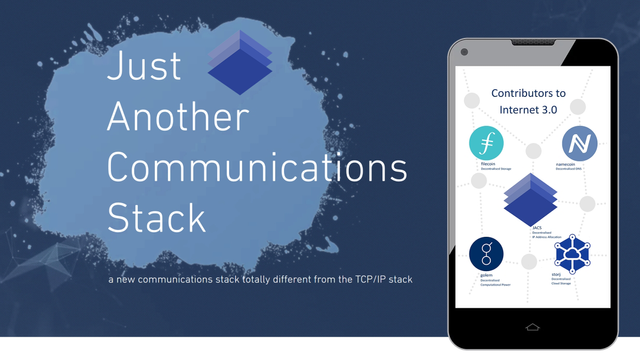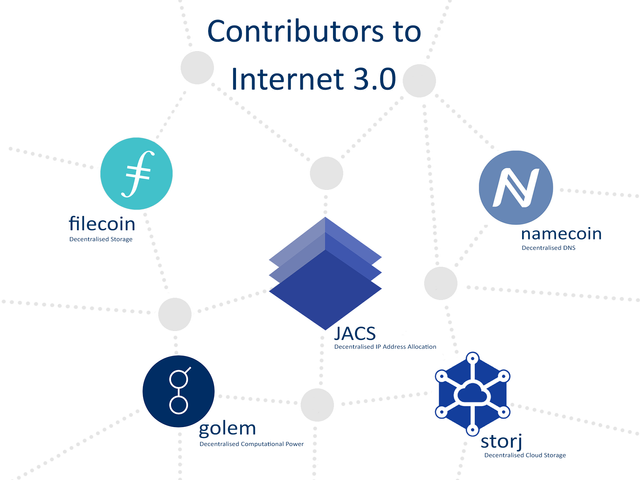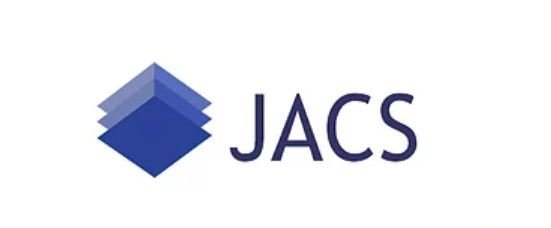Jacstech- new blockchain to create a communications stack
What is Jacstech?

JACS_tech Project is world best decentralized framework which joins all past blockchain innovation to one spot by utilizing a different convention holding the key component of JACS Token. Physical and Logical Addresses In Data Networking, there are twokinds of addresses; physical addresses (likeMAC) and logical addresses (likeIP).IP addresses and MAC addresses were developed around the same time but each wasresponding to a different quandary.Consider the case of an Ethernetcable/segment overwhich several contrivances could be physically connected,and all have overtness to the signals transmitted onto thecable. In other words; all contrivances canhear all other contrivances,but each contrivance has a unique identifier (MAC Address) with which they could address their data. This address would not avert everyone else on the cable from visually perceiving the data, but it would provide a designator as to which, categorical contrivance was the intended recipient of that data.
But because in the genuine-worldnodes will not always be on the same segment, as the case of the public Internet, everydata networknode(host,router, oreven a network printer)is assigned alogical globaladdress(like IP)that is utilized to locate and identify the node in communications with other nodes.IPv4addressingprovides 232(4,294,967,296) addresses(just less than 4.3 Billion). However, sizably voluminous blocks of IPv4 addresses are reserved for special uses and are unavailable for public allocation. Per-Interface IP Address In the IP world, if a contrivance has several network interfaces, then each interface must have at least one distinct IP address assigned to it. For example, a laptop might have a wireless network interface and a wired network interface utilizing a network cable, and this would require a total of two IP addresses, one per interface. Another example is a mobile phone withcellular data networkand Wi-Fi.
Routers, by nature,have several network interfaces and typically have several IP addresses associated with them. It is additionally possible that an interface can be assigned more than one IP address for sundry reasons(secondary addresses).The IPv4 addressing structure provides an inadequate number of publicly routable addresses to provide a distinct address to every Internet contrivance or accommodation. This quandary has been mitigated for some time by transmutations in the address allocation and routing infrastructure of the Internet. This commenced by the transition fromclassfulnetworkaddressing toClassless Inter-Domain Routing(CIDR), thatdelayed the lassitude of addresses substantially.
Blockchain of Jacs:

In this example, JACS will utilize the Ethereum blockchain as a protocol with a view to fortify the operation of the platform. But in the future JACS will launch its own local blockchain, categorically "JACS native blockchain", which runs at the local public blockchain in predilection to the Ethereum blockchain. Running any process remotely and efficiently controlling its execution is quite a great deal presented by utilizing 5G. But wouldn’t the thing of automation be consummated through synthetic astuteness AI and having a contrivance able to controlling such technique? JACS is launching a cellular app with (restricted time) loose VPN get ingression to and a prodigious top rate model, available anon for MacOS and Android.
To conclude; JACS potentiates Web 3.0 development by giving a decentralized information communication stack that sanctions subsisting dispensed programs and managements to work in integration to grow to perform the genuine variables of things to find.
Internet Problem & Solution of Jacstech:
IPv4 Lassitude-Reasons, While the primary reason for IPv4 address lassitude is inadequate capacity in the design of the pristine Internet infrastructure, several supplemental driving factors have aggravated the shortcomings. Each of them incremented the ordinant dictation on the inhibited supply of addresses, often in ways unanticipated by the pristine designers of the network. The Cyber World Engineering Task Force(IETF) engendered the Routing and Addressing Group (ROAD) in November 1991 to respond to the scalability quandary caused by theclassful networkallocation system in place at the time. The anticipated shortage has been the driving factor in engendering and adopting several incipient technologies, includingNAT,CIDR in 1993, and IPv6 in 1998. IPv6, the successor technology to IPv4 which was designed to address this quandary, fortifies approximately3.4×1038network addresses.
Albeit as of 2008the soothsaid depletion was already approaching its final stages, most providers of Internet accommodations and software vendors were just beginningIPv6 deploymentat that time.The top-level lassitude occurred on 31 January 2011.

Four of the five RIRs have exhausted allocation of all the blocks they have not reserved forIPv6 transition; this occurred on 15 April 2011 for the APNIC, Asia-Pacific,on 14 September 2012 for RIPE NCC, Europe, Middle East and Central Asia, on 10 June 2014 forLACNIC,Latin America and the Caribbean, and on 24 September 2015 for ARIN North America. Individual ISPs still had unassigned pools of IP addresses, and could recycle addresses no longer needed by their subscribers. Each exhausted its pool of available addresses at different times.
Token Details & Roadmap:
Token Name: JACS
Type: Utility
Platform: Ethereum (Will Migrated to JACS Native Blockchain)
Token Decimal: 18
Maximum Token Supply: 536,870,912
Website: https://www.jacs.tech/
Twitter: https://www.twitter.com/Moustafaamin77
Telegram: https://t.me/jacstech
Bitcointalk: https://bitcointalk.org/index.php?topic=5279310.0
LinkedIn: https://www.linkedin.com/company/viablock
Whitepaper: https://www.jacs.tech/white-paper
Author Details:
Bitcointalk Username: Marina5
Bitcointalk Profile: https://bitcointalk.org/index.php?action=profile;u=1142505